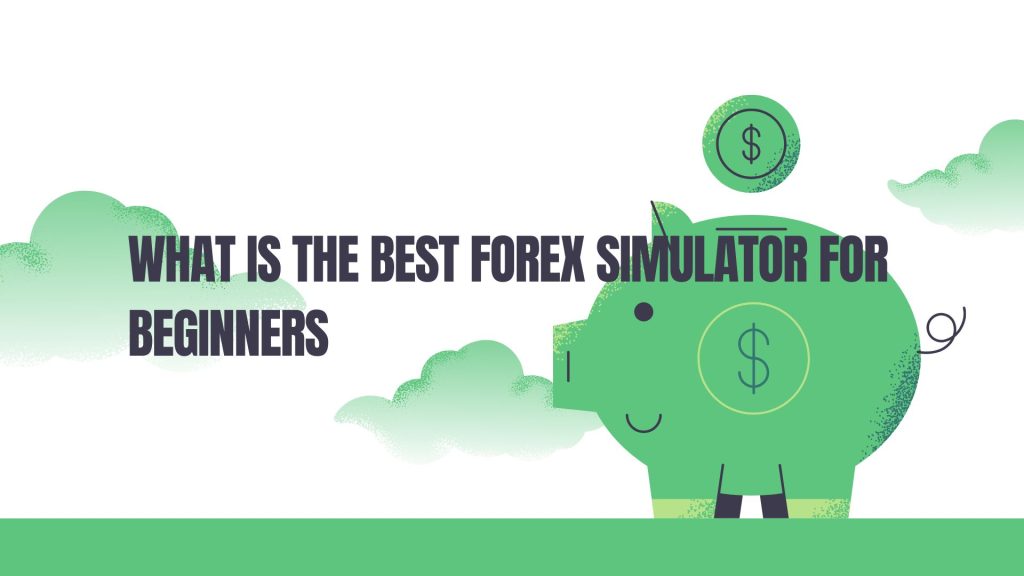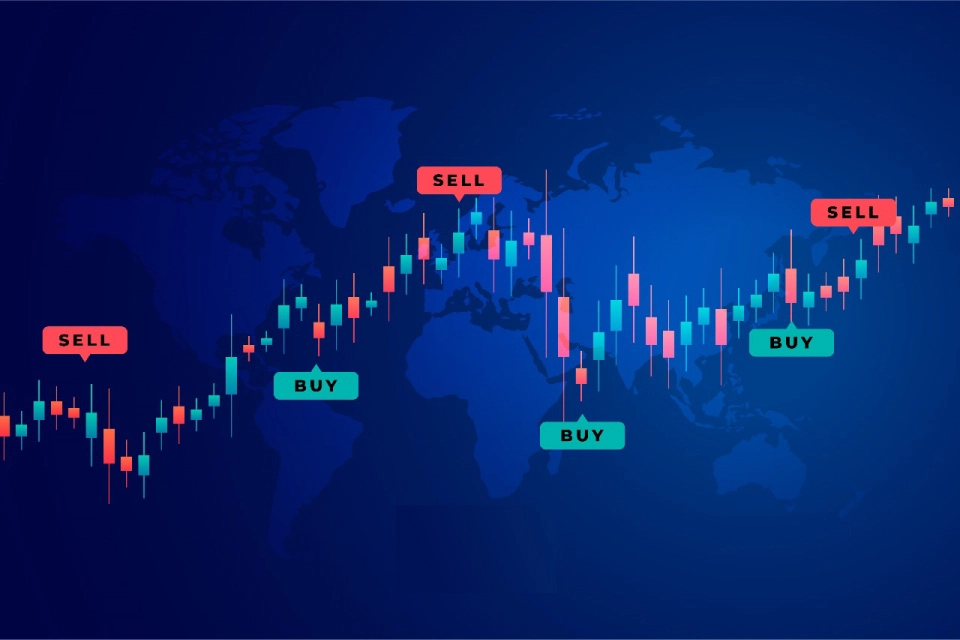A Forex simulator is a powerful tool that allows traders to practice risk-free by simulating real market conditions. It’s perfectly useful for beginners who want to get hands-on experience without investing their real money in the trades. By using virtual funds, traders of all stages can test different strategies, learn how the market moves, and build confidence before diving into live trading.
Beyond just placing trades, a good Forex simulator offers real-time charts, technical indicators, and even economic news, making the experience feel as close to real trading as possible. One key difference between simulated trading and demo trading is the data they use. While demo trading relies on real-time market data, simulated trading is based on historical data. This means traders can replay past market conditions, execute trades, modify positions, and see how their strategies would have played out.
Not only does a Forex simulator help you sharpen your skills, but it’s also a great way to experiment with new trading ideas. By testing different approaches in a controlled setting, you can figure out what works and avoid costly mistakes when you transition to real trading.
If you’re a beginner trader who isn’t ready to risk their real money trading, you might consider using a Forex trading simulator. Forex trading simulators have features and tools that allow you to learn the ropes of trading without the financial risk of live trading.
In this article, we’ll discuss the best Forex simulator for beginners, the benefits and risks of a Forex simulator, the best Forex broker simulators, and more.
Best Forex Simulators for Beginners in 2025
Here are some of the best forex simulators for beginners in 2025 that will help traders of all levels find their perfect simulator;
MT4
With the MT4 Trading Simulator Pro, you can go back to any date in the past and replay the market as if it were happening in real-time. It mimics real market conditions, letting you test your strategies in a realistic environment.
Here’s what you can do with Forex simulation on MT4:
- Take full control of your trading experience choose any instrument, timeframe, or date range to simulate. You can also adjust the speed, slow it down, speed it up, or pause whenever you need.
- Use MT4 indicators and templates just like you would in a live trading session.
- Track your performance with a balance/equity graph and a detailed trade history.
- Save your results as an HTML report for easy review and analysis.
Trading View
TradingView lets you practice trading with virtual money to buy and sell currencies in a risk-free environment. The market conditions and trading experience are just like real trading—the only difference is that you’re not using real money.
Here’s how it works:
- The system tracks your trades and shows your profit and loss (PnL) so you can measure your performance.
- You start with $100,000 in virtual funds and can reset your balance anytime.
- The chart includes easy “buy” and “sell” buttons, making it simple to place trades quickly.
Just log in to your TradingView account and start practicing!
Forex.com
Forex.com provides a range of powerful trading platforms designed for speed, flexibility, and top performance. When you sign up, you get access to advanced trading features, built-in market insights, and professional charting tools. Plus, you can backtest automated strategies using real historical price data to see how they would have performed in the past.
How to Simulate Forex Trading Effectively
Treat It Like Real Money
Just because it’s virtual money doesn’t mean you should take reckless risks. Stick to your trading plan, manage your emotions, and set realistic goals. Decide how much virtual capital to start with, set a maximum risk per trade, and limit the number of trades per day or week.
Test Different Strategies
Use your demo account to experiment with different trading strategies, technical indicators, and risk management techniques. Practice placing limit, stop, and trailing orders. Try out hedging strategies and see how the market reacts to major events.
Analyze Your Trades
Keep track of your trading activity, review your wins and losses, and look for patterns. Identify mistakes and figure out what’s working and what’s not.
Transition to Live Trading Gradually
Once you’re consistently profitable in simulation mode, start trading with real money, but take it slow. Begin with small amounts to manage your risk while you adjust to real trading conditions.
The key is to treat simulated trading as seriously as real trading. Use it as a learning tool to build confidence and refine your skills in a risk-free environment.
Choose a Forex simulator that builds real trading skills.
Don’t settle for just basic charts when choosing a free Forex simulator. Go for one that gives you real-time market data, access to Level 2 order books, and customizable risk settings. These features make the experience more realistic, helping you deal with real market conditions like liquidity, spreads, and price slippage. A good simulator should also let you automate strategies to experiment with algorithmic tradin,g even if you’re just starting.
Another thing to consider is trading psychology, which many platforms ignore. Try setting up psychological triggers, like adjusting stop-loss orders or simulating account drawdowns, to mimic the pressure of real trading. This helps you stay focused and make better decisions. Also, look for a simulator that tracks your performance and highlights things like impulsive trades or risky bets. This way, you can understand your trading habits and improve over time.
How We Rate Forex Brokers
Traders Union carefully evaluates brokers using over 100 different factors, both quantitative and qualitative. Each aspect is scored individually and contributes to an overall rating.
What They Look At:
- Regulation & Safety: How well a broker is regulated and the reputation of its licenses.
- User Reviews: Real client feedback is fact-checked and analyzed to measure customer satisfaction.
- Trading Instruments: The variety of assets and markets a broker offers.
- Fees & Commissions: A full breakdown of trading costs to see how much traders pay.
- Trading Platforms: The quality, features, and usability of the platforms available.
- Other Factors: Things like brand reputation, customer support, and educational resources also come into play.
Want to know more? Check out the detailed broker assessment methodology created by the experts at FX-Guide Pro.
Frequently Asked Questions (FAQ’s)
- Question: What is a Forex simulator?
A Forex simulator is a trading tool that lets you practice trading with virtual money in a risk-free environment. It helps you learn market movements, test strategies, and build confidence before trading with real funds.
- Question: Are Forex simulators free to use?
Many Forex simulators offer free versions with basic features, but advanced tools like real-time data, algorithmic trading, or premium indicators may require a subscription or a brokerage account.
- Question: How accurate are Forex simulators?
The accuracy depends on the platform. High-quality simulators replicate real market conditions, including price fluctuations, liquidity, and slippage. However, emotions and real-time market reactions in live trading can never be fully simulated.
- Question: Are there mobile Forex simulators?
Yes! Many brokers and trading platforms offer mobile-compatible Forex simulators, allowing you to practice trading on the go.
- Question: Can I use a Forex simulator to test trading strategies?
Yes! A simulator is a great way to backtest and refine trading strategies using historical data. Some platforms also allow for automated strategy testing.
- Question: Is simulated trading the same as paper trading?
Yes, they’re pretty similar! Both let you practice trading without using real money. However, some simulators offer more advanced features, like real-time data and strategy automation, while basic paper trading is often more manual.
- Question: How long can I use a Forex simulator?
It depends on the platform. Some offer unlimited free access, while others might have time limits or require a subscription for full features.
- Question: Is historical market data available on simulators?
Yes, most Forex simulators provide historical market data, allowing you to test strategies and see how trades would have played out in the past.
- Question: How realistic are conditions on a Forex simulator?
It varies by platform. The best simulators factor in real market conditions like spreads, slippage, and liquidity, making the experience as close to live trading as possible.
Conclusion
A Forex simulator is a great way to practice trading and learn how the market works without the risk of losing real money. By using historical market data, these simulators let you experience real trading conditions and develop your skills. There are plenty of platforms to choose from, so the best one for you will depend on factors like ease of use, fees, and the features that matter most to you. In this article, we’ve discussed the best forex simulators for beginners, follow us to know more.



